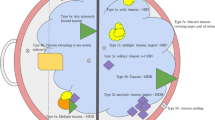Abstract
Retinoblastoma (Rb), the most common intraocular tumor in childhood, is caused by the loss of function of both retinoblastoma susceptibility gene (RB1 or Rb1) alleles. In 1971, Alfred Knudson proposed his “two-hit” theory based upon empiric observations of the clinical genetics of Rb, revealing the role of tumor-suppressor genes in human cancer. Knudson proposed that: “In the dominant inherited form of Rb, one mutation is inherited via germ line and the second occurs in somatic cells. In the nonhereditary form, both mutations occur in somatic cells.” The Knudson hypothesis was validated later with the cloning of RB1, the first tumor-suppressor gene to be identified. A few years later, Harbour extended these findings to small-cell lung cancer, showing that the RB1 locus was disrupted in tumors other than Rb and osteosarcoma. Since then, it has been found that most, if not all, tumors have defects in their RB1 pathway through genetic lesions in the RB1 gene itself or other genes in the pathway. The history of Rb research highlights how basic research on a rare childhood cancer can have a much broader effect on a disease that affects millions of people each year worldwide.
Similar content being viewed by others
References
De Falco G, Giordano A (2006) pRb2/p130: a new candidate for retinoblastoma tumor formation. Oncogene 25:5333–5340
Genovese C, Trani D, Caputi M, Claudio PP (2006) Cell cycle control and beyond: emerging roles for the retinoblastoma gene family. Oncogene 25:5201–5209
Lee JO, Russo AA, Pavletich NP (1998) Structure of the retinoblastoma tumour-suppressor pocket domain bound to a peptide from HPV E7. Nature 391:859–865
Parisi T, Yuan TL, Faust AM et al (2007) Selective requirements for E2f3 in the development and tumorigenicity of Rb-deficient chimeric tissues. Mol Cell Biol 27:2283–2293
Lohmann DR (1999) RB1 gene mutations in retinoblastoma. Hum Mutat 14:283–288
Lohmann DR, Gallie BL (2004) Retinoblastoma. Revisiting the model prototype of inherited cancer. Am J Med Genet C Semin Med Genet 129: 23–28
Frischmeyer PA, Dietz HC (1999) Nonsense-mediated mRNA decay in health and disease. Hum Mol Genet 8:1893–1900
Gámez-Pozo A, Palacios I, Kontic M et al (2007). Pathogenic validation of unique germline intronic variants of RB1 in retinoblastoma patients using minigenes. Hum Mutat 28:1245
Dehainalut C, Michaux D, Pagès-Berhouet S et al (2007) A deep intronic mutation in the RB1 gene leads to intronic sequence exonisation. Eur J Hum Genet 15:473–477
Leiderman YI, Kiss S, Mukai S (2007) Molecular Genetics of RB1. The retinoblastoma gene. Sem Ophthalmol 22:247–254
Alonso J, García-Miguel P, Abelairas J et al (2001) Spectrum of germline RB1 gene mutations in Spanish retinoblastoma patients: phenotypic and molecular epidemiological implications. Hum Mutat 17:412–422
Brichard B, Heusterspreute M, De Potter P et al (2006) Unilateral retinoblastoma, lack of familial history and older age does not exclude germline RB1 gene mutation. Eur J Cancer 42:65–72
Alonso J, Palacios I, Gámez A et al (2006) Diagnóstico molecular del retinoblastoma: epidemiología molecular y consejo genético. Med Clin (Barc) 126:401–405
Corson TW, Gallie BL (2007) One hit, two hits, three hits, more? Genomic changes in the development of retinoblastoma. Genes Chromosomes Cancer 46:617–634
Madhavan J, Coral K, Mallikarjuna K, Corson TW et al (2007) High expression of KIF14 in retinoblastoma: association with older age at diagnosis. Invest Ophthalmol Vis Sci 48:4901–4906
Gratias S, Rieder H, Ullmann R et al (2007) Allelic loss in a minimal region on chromosome 16q24 is associated with vitreous seeding of retinoblastoma. Cancer Res 67:408–416
Klutz M, Brockmann D, Lohmann DR (2002) A parent-of-origin effect in two families with retinoblastoma is associated with a distinct slice mutation in the RB1 gene. Am J Hum Genet 71: 174–179
MacPherson D, Dyer MA (2007). Retinoblastoma: from the two-hit hypothesis to targeted chemotherapy. Cancer Res 67:7547–7550
Laurie NA, Donovan SL, Shih ChS et al (2006) Inactivation of the p53 pathway in retinoblastoma. Nature 444:61–66
Kamburoğlu G, Kiratli H, Söylemezoğlu F, Bilgiç S (2007) Clinicopathological parameters and expression of P-glycoprotein and MRP-1 in retinoblastoma. Ophthalmic Res 39:191–197
Krishnakumar S, Mallikarjuna K, Desai N et al (2004) Multidrug resistant proteins: P-glycoprotein and lung resistance protein expression in retinoblastoma. Br J Ophthalmol 88:1521–1526
Stephan H, Zakrzewski JL, Bölöni R et al (2008) Neurotrophin receptor expression in human primary retinoblastomas and retinoblastoma cell lines. Pediatr Blood Cancer 50:218–222
Poulaki V, Mitsiades CS, Kotoula V et al (2007) The proteasome inhibitor bortezomib induces apoptosis in human retinoblastoma cell lines in vitro. Invest Ophthalmol Vis Sci 48:4706–4719
Author information
Authors and Affiliations
Corresponding author
Additional information
This article was retracted by the Editor-in-Chief and the authors.
Supported by an unrestricted educational grant from GlaxoSmithKline.
About this article
Cite this article
Sábado Álvarez, C. RETRACTED ARTICLE: Molecular biology of retinoblastoma. Clin Transl Oncol 10, 389–394 (2008). https://doi.org/10.1007/s12094-008-0220-y
Received:
Accepted:
Published:
Issue Date:
DOI: https://doi.org/10.1007/s12094-008-0220-y




